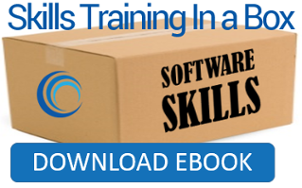
We’ve explored different learning styles in a previous post. While the theories can provide an important foundation for design of training, frankly, it can be a little overwhelming for those of us in the trenches.
Kolb’s learning styles suggest that people vary in the ways that they process and perceive information: doing vs. watching, and thinking vs. feeling. While Fleming’s VARK model describes how people acquire knowledge based on preferred modes of input: visual, auditory, reading & writing, and kinesthetic.
So how do we put all of this theory into practice, and adjust our training to meet the needs of all employees?
Tips for reaching all adult learning styles
Regardless of which learning model you espouse, there are a number of concrete things you can do to adjust your training for immediate results.
- Make sure that your training includes an opportunity to tie the learning objectives back to business needs and job responsibilities. Help each employee connect the dots between how this learning applies to her work. As we mentioned in our post on adult learning theory, adults are more motivated to learn when they understand why they should learn something.
- Provide guided practice with feedback and room for mistakes. Mistakes are useful building blocks, as long as there is an immediate opportunity to recognize and learn from each mistake. Set up a practice environment that is as close as possible to the real-work situation.
- Consider blended learning, using technology and online training combined with more traditional classroom training methods. Allowing your learners to choose between a live class and an online training video, for example, will go a long way toward reaching different learning styles.
- Older adults in particular need plenty of time to absorb new materials. Research shows that speed of processing is one of the primary age-related cognitive effects. So make sure there is room in your training schedule for slower learners before moving on. By giving everybody access to learning resources and time for self-paced review, you help level the playing field for digital immigrants (those who adopted technology later in life).
- Provide an outline or any other type of "advanced organizer." It acts as a conceptual bridge for learners to approach the new information presented in training. Research shows this is particularly useful for older learners and it can help reduce performance differences in training between younger and older individuals.
- Build practice sessions and group activities throughout the training, such as role play, brainstorms, and small group discussions. Include opportunities for learners to express themselves, work together, and be active. This will enable you reach across multiple learning styles, allowing each employee to process the information in her preferred way.
- Ensure your trainees use the skills within 30 days of the training. Follow up with managers and supervisors to make them your allies in this goal. Studies show that when learning a new skill, if it’s not used within 30 days, ninety percent of it will be lost.
By giving everybody access to learning resources and opportunity for self-paced review, you will be doing all types of learners a favor. Online learning libraries are a great way to provide training resources for all employees to use at their convenience. Learn more from our eBook on How to Implement Training Successfully.








